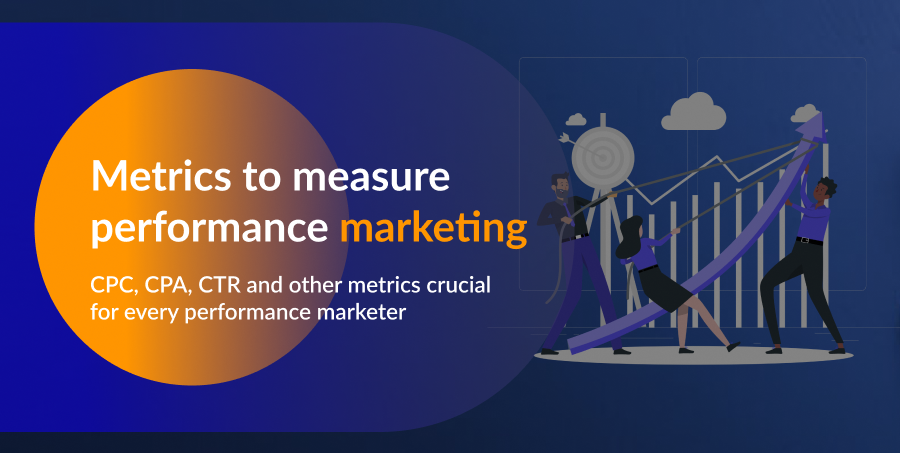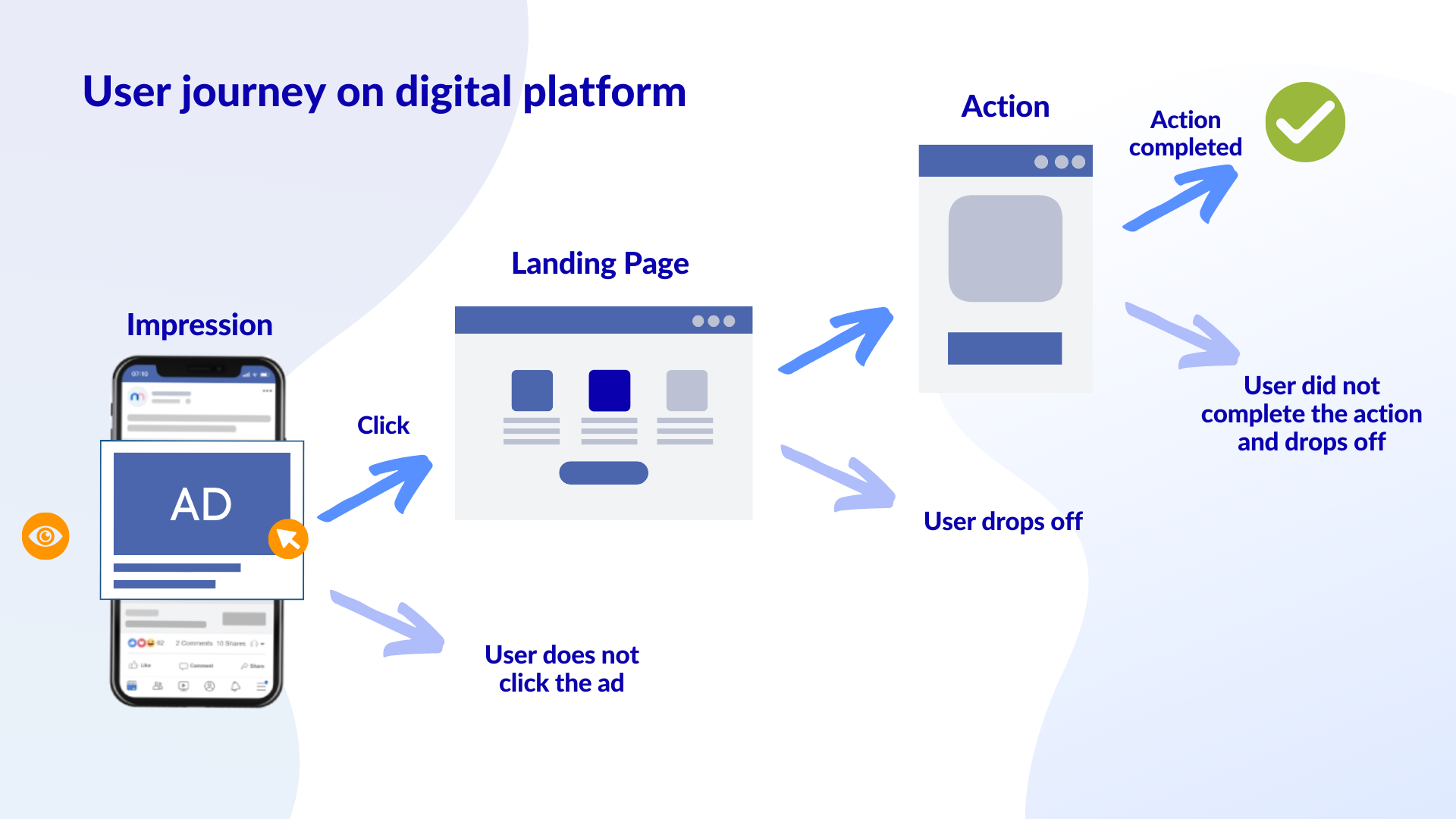Key metrics to measure performance marketing

“Half the money I spend on advertising is wasted; the trouble is I don't know which half.” - John Wanamaker
Digital marketing is not easy.
Yes, there is a wealth of real-time data for making strategic decisions. But even after accessing data points like impressions, clicks, etc., most campaigns could still end up being ineffective. That’s where performance marketing comes in.
What is performance marketing?
Performance marketing is a digital marketing model that utilizes marketing budgets only for result-based outcomes. As the name suggests, it is a performance-based strategy solely focused on generating measurable outcomes. But what are these outcomes?
The desired outcomes can be on a spectrum from an ad view to a click or direct purchases as well. Let's understand the metrics to measure each effectively.
User Action Metrics
So what does a digital marketing campaign look like? Let's understand the full user journey.
Digital marketers run online ads for their brands on a platform, like Facebook. The ad will be displayed to a targeted audience (that they decide). And every time the ad is displayed to a user, it will be counted as an impression.
Impressions: Impressions measure the number of times users have seen the ad. Impressions are therefore an indicator of the scale of your campaign.
It should be noted that impressions are not unique viewers but the total number of views. Hence the total unique reach will always be less than or equal to the number of impressions served.
On digital media, clicks are the initiation of a user's interaction with any ad or post. These clicks can be used to redirect the user to a brand's social profile, eCommerce store, or the brand website depending on the objective of the campaign.
Clicks: It measures the number of times a user has clicked on an ad. Clicks are generally considered a proxy for user intent as it's the first active action that he/she takes.
Once the user clicks and lands on the desired landing page, there are further actions that can be measured. These are called conversions. A conversion action is one that the user takes after clicking on the ad and could be following the social media page, watching a video, submitting a lead, adding a product to the cart or even completing a purchase from an eCommerce storefront.

Performance Indicators of ad campaigns.
Let's look at some performance-driven metrics and how they are crucial for a performance marketing strategy.
Click-through-rate (CTR)
CTR is the ratio of total clicks to total impressions. It represents simply the percentage of users who clicked on an ad out of the times the ad was displayed. It is an important indicator of an ad’s performance.
A higher CTR would mean that the campaign is reaching out to the right audiences through the right communication. This is the first indicator to gauge the creative quality or the relevance of messaging of the campaigns.
Insight: CTR is not only dependent on the quality of creatives and messaging, but equally on the quality of the audience that brands serve their ads to. A low CTR should be fishboned on both of these factors.
Conversion Rate (CR)
In digital marketing, the Conversion Rate is a derived metric that tells how many people completed the desired conversion action after clicking on the ad. The ratio of total actions to total clicks will give you the conversion rate.
Insights: The Conversion Rate is an indicator of the relevance of the audience being redirected from the ad campaign, as well as the friction that the landing page has for the user to take the desired action.
Cost-efficiency metrics
Any marketing effectiveness is typically measured against the cost of the activity. Performance marketing is no different.
With fully measurable ad spends, businesses can determine how much cost they are incurring for getting impressions, clicks, or a lead irrespective of the buy type. And it is the role of the performance marketer to ensure that the advertising budget is being used effectively to achieve set goals.
The following metrics are typically used to understand the cost-effectiveness of marketing campaigns.
Cost per Mille (CPM)
CPM is a derived metric to understand the average cost incurred for the product appearing every 1000 times. CPM is charged when 1000 impressions are delivered on the ad.
Insight: For broader targeting (eg. only geography demographics), CPMs are usually lesser as compared to sharper targeting (eg. first party data). This should however not be a hindrance to sharper targeting if the end objective is to optimize for conversions, not impressions.
Cost per Click (CPC)
The cost an advertiser pays to the publisher for every click they generate. It is calculated by dividing the total cost of the campaign by the number of clicks.
Insight: Each brand and campaign type may have a different CPC benchmark. The objective of a performance marketer is to ensure that CPCs decrease over a period of time.
Cost per Action (CPA)
This is also called Cost per Action. This calculates the cost incurred for the conversion action that a performance marketer has defined for the campaign.
Insight: CPA is an indicator of how the campaign is performing. Best case scenario for a marketer is to have high impressions, high clicks, and low CPA.




How does a performance marketer use these metrics for decision-making?
The role of the performance marketer is to manage multiple campaigns with potentially different objectives. For each of the campaigns, there is a result metric that should be optimized. For example, for a brand awareness campaign, optimizing for CPMs will allow one to reach the maximum audience for a given amount of ad spend, whereas, for an eCommerce conversion campaign, the metric to optimize would be CPA, where the action is defined as successful checkout from the website.
Each of these campaigns may have multiple audiences and ad assets running, and it is the performance marketer's job to allocate budgets behind the campaigns that are giving better results, to improve the effectiveness of the overall marketing campaign.
To learn performance marketing and kickstart your digital career, sign up for an eCommerce specialist and digital marketing course.